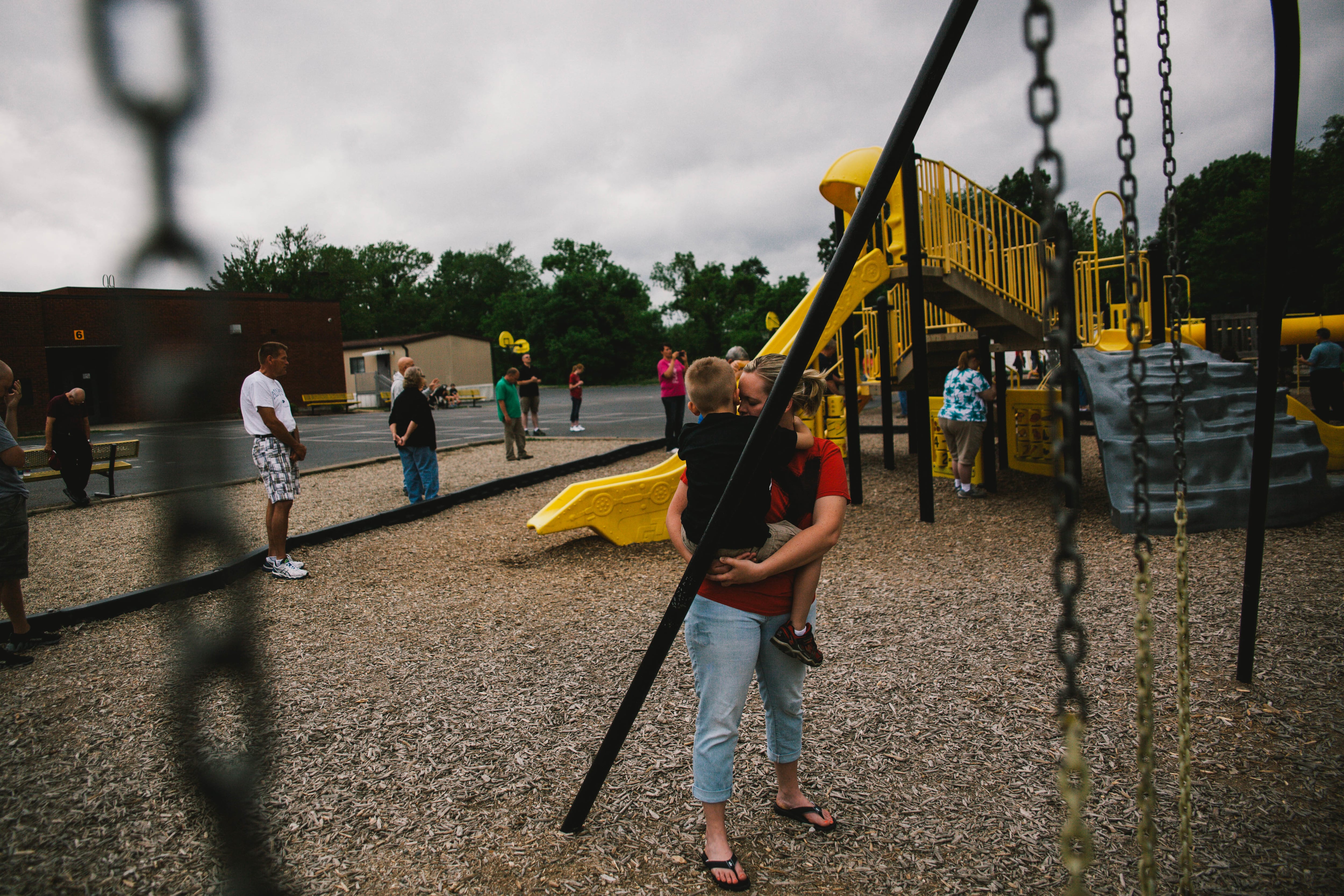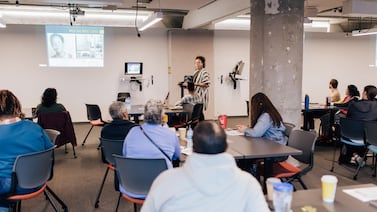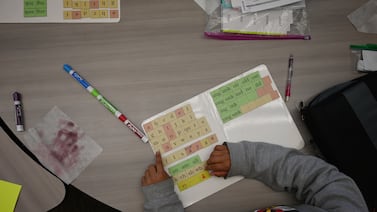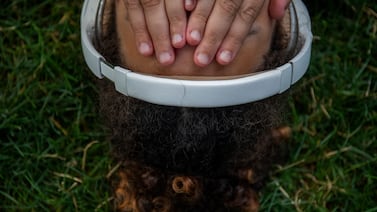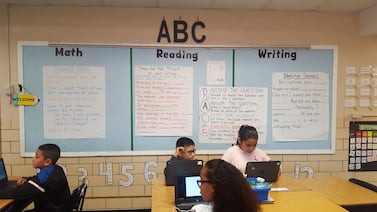In 2015, Austin, Indiana was hit with a deadly epidemic: HIV/AIDS. This city, then over 4,000 people, saw over 200 HIV cases in about a year during its outbreak, which one health reporter called “the worst drug-fueled HIV outbreak ever to hit rural America.”
So when the COVID-19 pandemic hit, the small city was prepared to respond. The school district and public health department took advantage of their relationship and community trust to plan for a safe school reopening that stands out as one of the most successful in the state, according to a COVID-19 Data Dispatch analysis.
“The HIV outbreak actually brought a lot of people together,” said Brittany Combs, a Scott County public health nurse who worked with the district. “We all came to the same table and figured out what we needed to do to tackle the HIV outbreak. And so, for the pandemic, we all were already at the table.”
This school district, Scott County School District 1, is the subject of the first profile in the COVID-19 Data Dispatch’s “Opening” series. The district was selected along with four others because the majority of the district’s students returned to in-person learning during the 2020-’21 school year — and under 5% of the student population was identified as COVID-positive, regardless of the source. (According to the CDC, about 5% of school-age children in the U.S. have contracted COVID-19 since the start of the pandemic.)
While Austin’s experience with HIV/AIDS is unique, the district offers lessons for other communities. An open line of communication between Austin’s county public health agency, school administrators, and other local leaders fostered an environment of collaboration and trust. Plus, the administrators took advantage of teachers’ and parents’ knowledge of their students to make them an integral part of identifying COVID-19 cases and stopping outbreaks.
Public health collaboration
In planning for reopening the district after spring 2020 closures, the public health department had “constant meetings with the school,” Combs said. The existing relationship between the school and public health experts streamlined these meetings. And, thanks to past outreach efforts around HIV and opioids, the public health department already had relationships with Austin families.
“I like to think that the health department already has a lot of trust because we were in the news a lot, we were in the forefront a lot, so they kinda know who we are,” Combs said.
Families were also likely to collaborate with the school district because they wanted their kids back in classrooms, according to Superintendent Trevor Jones. He said that the majority of students get free breakfast and lunch, a measure of poverty. Combined with the community’s past drug abuse issues, he said, there was ample motivation among parents and teachers alike to protect students from the isolation of remote learning.
“The safest place our kids can be is here at school,” Jones said.
While the schools had some basic safety measures in place, such as 6-foot spacing, masks required everywhere except at spaced-out desks, and regular handwashing, this community trust paid off most in identifying students with COVID-19 symptoms.
Deana Broadus, the district head school nurse, said that teachers and parents acted as a first line of defense in identifying symptoms. At the beginning of the school day, teachers took students’ temperatures and asked them about other symptoms.
“As the school year went on, teachers [get to] know their kids,” Broadus said. “They can kind of tell, oh, she doesn’t look that well today, go see the nurse.”
Broadus and the other school nurses also got to know students by following up on symptom questionnaires and developing medical histories. Some students would erroneously mark every symptom on the checklist, she said: “You get to know who’s trying to go home.” In other cases, the symptom checks inspired the nurses to keep better track of seasonal allergies, recurring stomach aches, and other chronic conditions that were previously reported by parents but not thoroughly documented by the school.
Parents took part in the informal COVID-19 surveillance, too. “Parents would call in and report certain symptoms,” Broadus said. “[Students] either needed a doctor’s note or a negative COVID test to return to school.”
The procedure was similar if a student was sent home. While the district initially quarantined full classes following a positive case, the strategy shifted to close-contact identification: figuring out which students had sat next to an infected child. Broadus said that the chief concern she heard from parents reporting a case was often ensuring that no more children than necessary would need to miss in-person class, though students who missed class could still follow along online.
COVID precaution: keep sick students home
Through collaboration with the public health department — which took charge of contact tracing for parents, staff and other non-students — Broadus found that the vast majority of cases came from outside school.
“Usually what we found was that a parent or someone else that the child lived with was sick, and then subsequently the student got sick,” she said. And, among those students, cases were typically identified quickly so that the virus didn’t spread to others.
One of the Austin district’s major lessons was the importance of telling families to keep their kids home if they were sick. In the past, students and staff alike tended to “push through it” and still come in if they didn’t feel well, Broadus said. Now, the policy is to stay home from school or work if you have any symptoms, not just those matching COVID-19. To reinforce this, Jones said, the district is removing rewards for perfect attendance and similar bonuses for staff. The schools are also continuing to emphasize handwashing and other good hygiene habits.
Still, the district did not avoid cases entirely. A total of 47 students contracted COVID-19 during the school year, including 13 students at Austin Elementary School, 19 at Austin Middle School, and 15 at Austin High School — or about 4% of the district’s enrollment. From November through December, the district identified the most cases, 17, Broadus said. It added safety precautions, such as limiting spectators at sporting events.
Delta poses new challenges to reopening
After relaxing safety measures this school year, the Austin school district last month reinstated them as COVID-19 cases rose. “We made some adjustments to our COVID procedures that have minimized the number of students in quarantine,” Jones wrote in an email.
The district switched to all-virtual classes for two weeks in early August, then returned to in-person class with stricter precautions. Staff continue to monitor symptoms and masks are required whenever students are not at desks. Administrators also used federal grants to improve ventilation.
Austin will continue to rely on its community to identify cases and stay safe in the new school year. “I feel like it wasn’t just one thing that we were doing,” Broadus said. “Everyone was working together.”
Betsy Ladyzhets is founder and editor-in-chief of the COVID-19 Data Dispatch, which explores the state of COVID-19 data in the United States. To read more stories from the Dispatch’s “Opening” series go to https://coviddatadispatch.com/. Contact Betsy Ladyzhets at betsy@coviddatadispatch.com or on Twitter at @betsyladyzhets.


